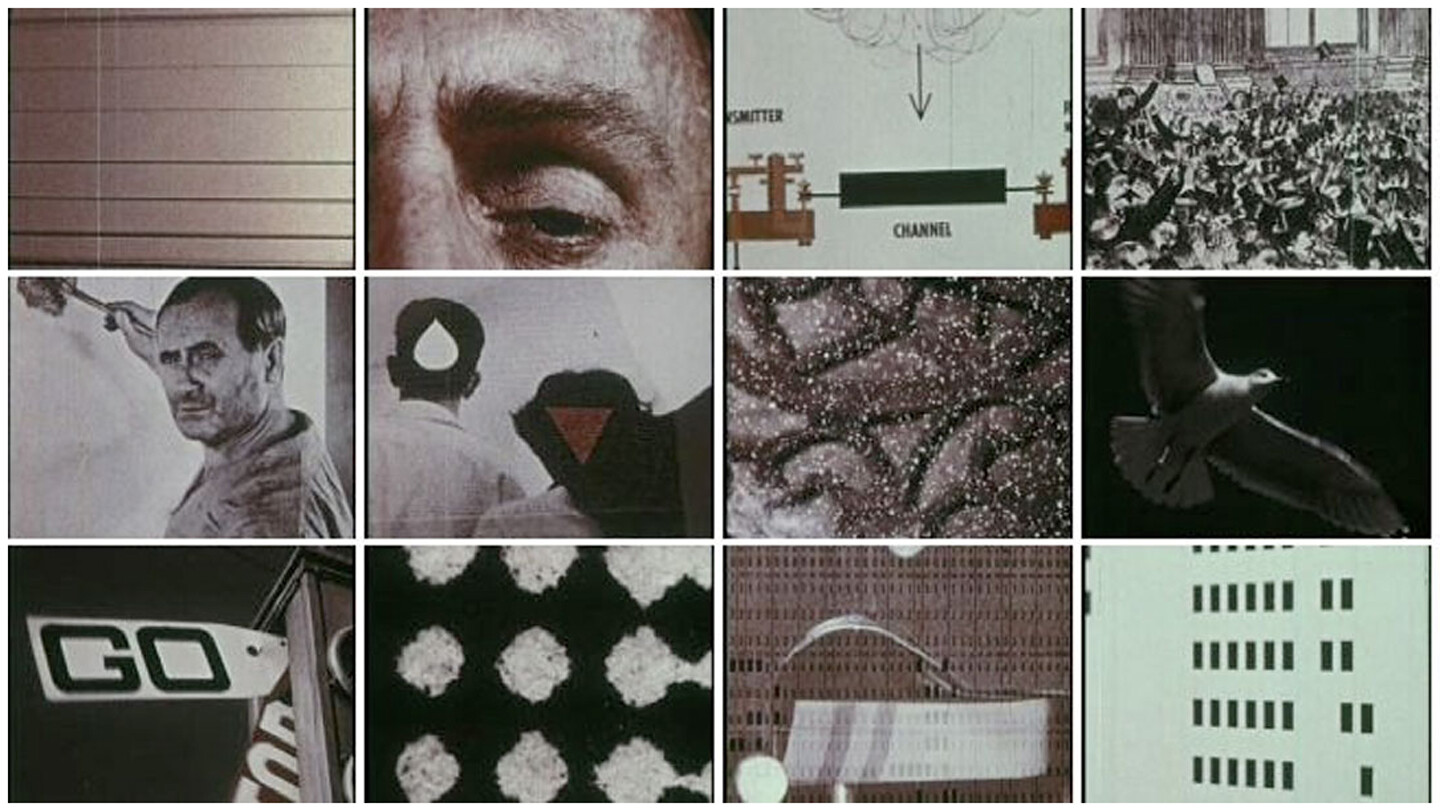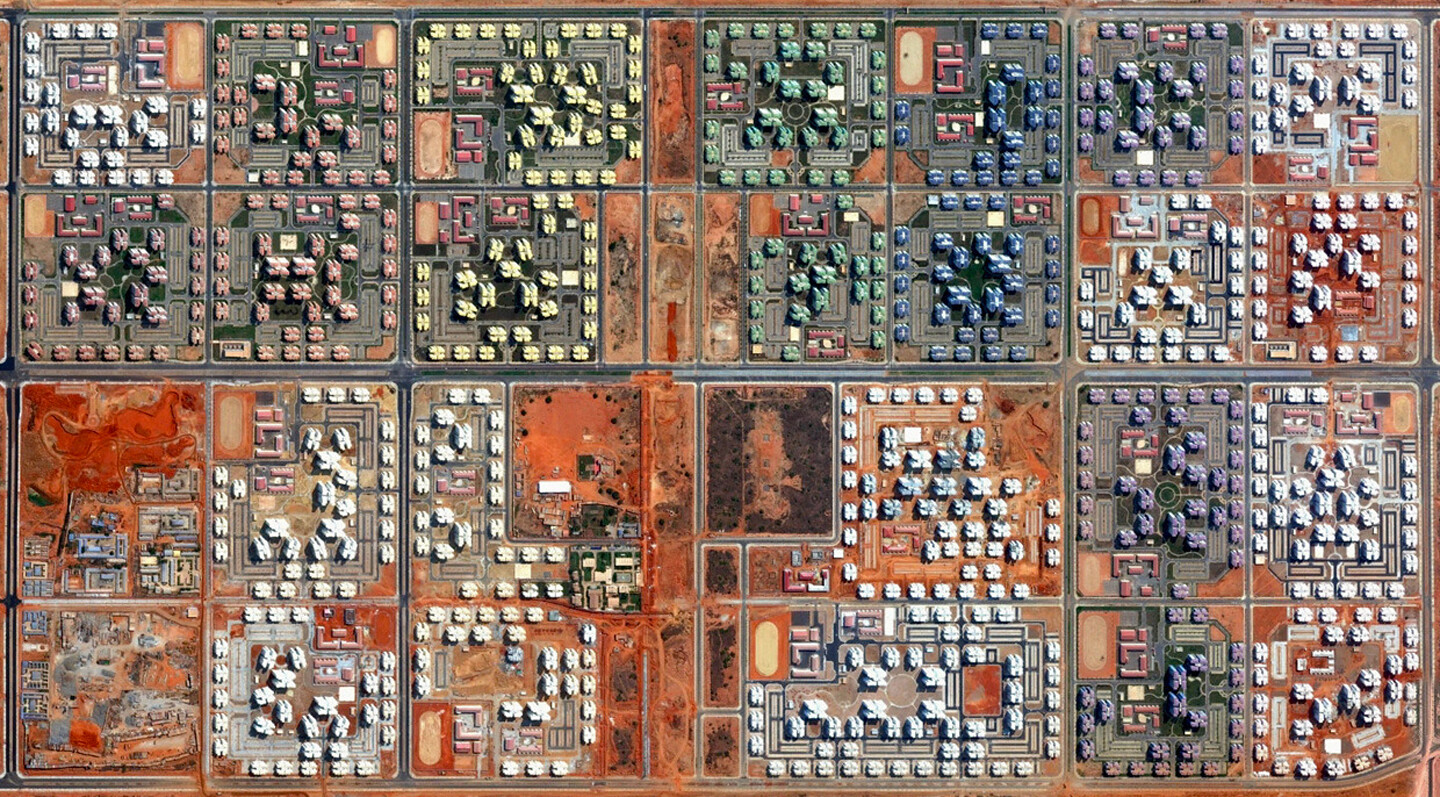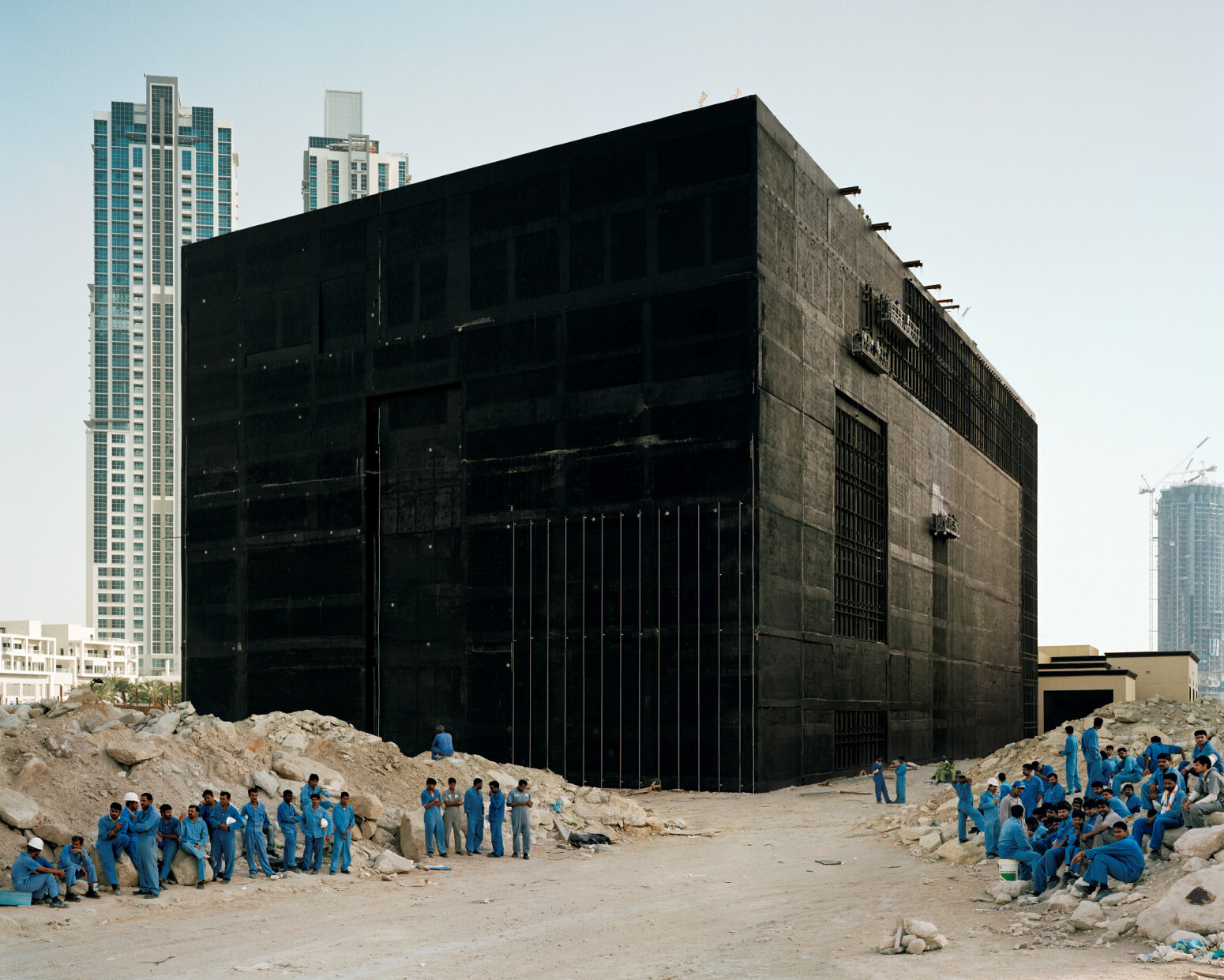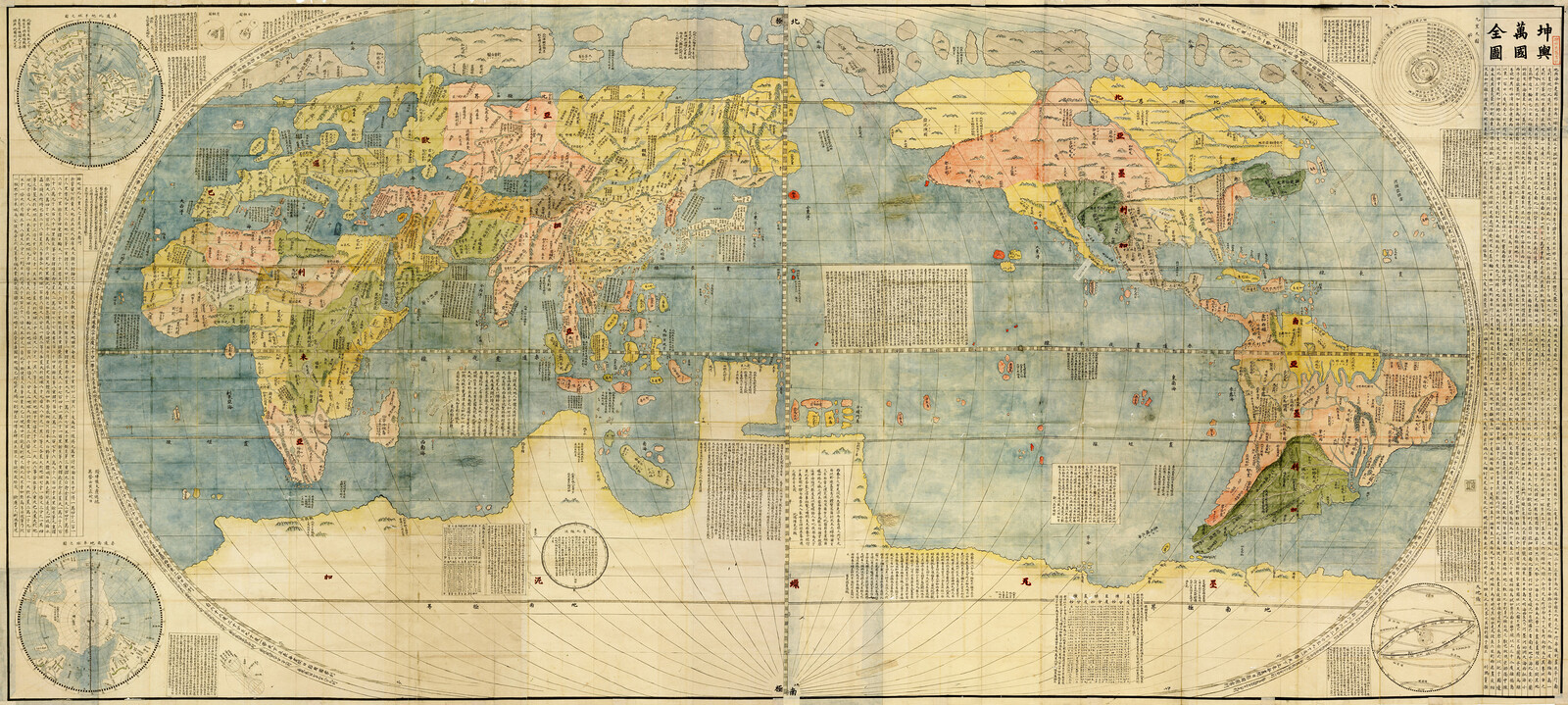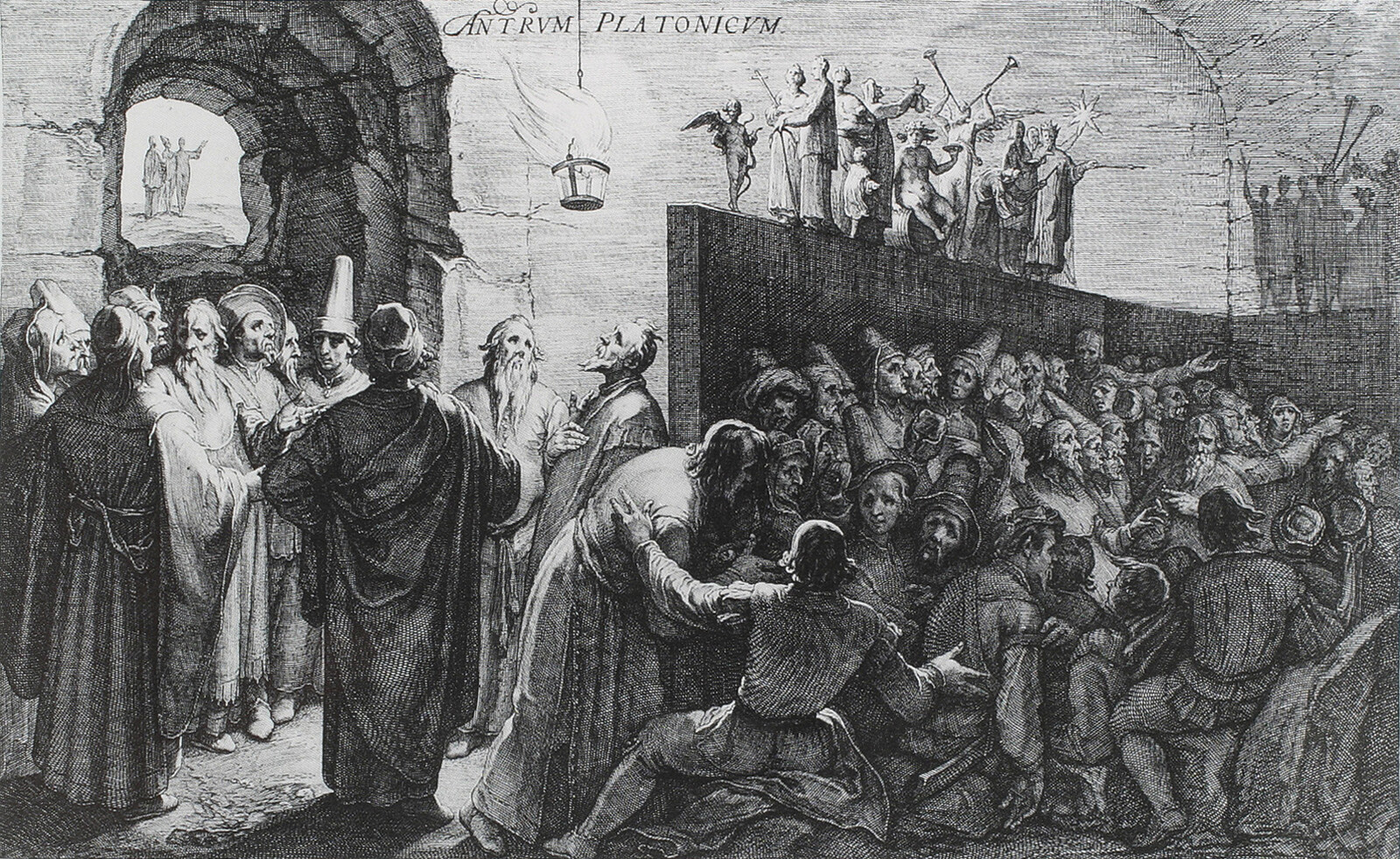Throughout history and across cultures, architects have engaged in intellectual debates about the built environment. They’ve grappled with the question of what architecture is and what it can be. In short, they’ve looked to provide an explanation of architecture and tried to answer the bigger picture question of why people design one way and not another. The aim of this syllabus is to introduce the expansive discipline, practice, and study of architecture. At once an examination of history and theory, it looks at the diverse ways architects have understood their world by actively negotiating between written words, drawings, and built projects. Adopting an explicitly transnational perspective, this syllabus introduces disciplinary knowledge shared by the academic and professional community that studies architecture.
This knowledge is at once specific and broad. It is specific and bounded in the sense that is the specialized knowledge of a single discipline, but is broad and unbounded in that architecture is fundamental to all societies and found in cultures globally. Architects share a similar discourse, but individuals and ideas in different cultures around the world have historically informed the field. Through exposure to a range of thinkers, students will be able to situate their own work within a diverse spectrum of theories concerning architecture, urbanism, and space.
One condition in architectural theory discourse that remains surprisingly under-examined is the sense that theory is an activity reserved exclusively for subjects (usually male) in the Western world. Despite years of debate regarding globalization and “world systems,” it is still the case that Western scholars in Western academies produce what is widely recognized as architectural theory today. Historically, the demographics of these scholars has been overwhelmingly white and male. Of course, exceptions to this trend exist; however, reviewing the literature, it raises the suggestive question: is architectural theory a uniquely Western construct?
The reasons for this situation are culturally and epistemologically complex, but nonetheless theory’s Euro–American bias is inarguable and deeply problematic. This syllabus challenges this by including sources from a range of cultural, geographic, and historical perspectives. It argues conventional approaches to theory surveys are inadequate in their parochial and presentist worldviews. Drawing attention to this situation should not erase the contributions of Western scholars to the theoretical canon, nor should it be construed as merely an exercise in multiculturalism or political correctness. Instead, this syllabus contends that truly globalizing architectural theory can fundamentally challenge our conception of what theory is and what it should do. Likewise, architectural theory’s present exclusivist position threatens to undermine its very legitimacy as a field of inquiry. It is time architectural theorists learn from related fields, recognize the limitations of their tacit assumptions, and expand how and who conceptualizes theory.
Path-breaking surveys about “global” and “world” architectural history have discussed examples of canonical works of architecture from Western and non-Western contexts for quite some time now.1 Anthologies of architectural theory, however, have been slower to change and sometimes openly acknowledge their biases. This syllabus asserts such a vantage point is no longer sustainable in today’s interconnected world and increasingly diverse architectural academy and profession. It’s an initial step in imagining a more culturally diverse collection of architectural theory and purposely designed to stimulate further debate. Making a concerted effort to include voices beyond the male Eurocentric core that has traditionally framed the dominant narrative of architecture’s disciplinary knowledge, this course includes texts from Lina Bo Bardi, Frantz Fanon, Ca’fer Efendi, Denise Scott Brown, Charles Correa, Diana Agrest, Hassan Fathy, Leo Ou–fan Lee, and Mabel Wilson, among others. Rather than operating as a counter-survey rejecting established theoretical discourse, this syllabus complements earlier debates within fields such as history, postcolonial theory, race and gender studies, and environmental discourse that emphasize the process of co-creation and circulation of ideas across cultures. The order of the sessions is roughly chronological. Together, they serve as a more expansive survey of architectural theory including heterogeneous, often conflicting positions, encouraging students to make connections between the selected texts.
Session 1: Introduction of Global Disciplinary Knowledge
These introductory texts examine concepts and themes informing our understanding of global disciplinary knowledge and the place of history and theory in architectural curricula, in particular, they reflect on the predicament that the study of architectural theory finds itself at the beginning of the twenty-first century. After experiencing something of a high moment for the discipline in the 1980s and 1990s, the utility of architectural came into question in subsequent decades. How does theory now operate in this “expanded field” state, informed by interdisciplinary and cross-cultural concerns? What does it mean to be “global” and why is it necessary to expand our current conceptions?
Readings
∙ Swati Chattopadhyay, “The Globality of Architectural History,” Journal of the Society of Architectural Historians 74, no. 4 (2015): 411–415.
∙ C. Greig Crysler, Stephen Cairns, and Hilde Heynen, “Architectural Theory in the Expanded Field,” in The SAGE Handbook of Architectural Theory, eds. C. Greig Crysler, Stephen Cairns, and Hilde Heynen (London: Sage, 2012), 2–18.
∙ Joseph Godlewski, “Introduction,” Introduction to Architecture: Global Disciplinary Knowledge (San Diego: Cognella, 2019), ix–xvi.
∙ Mark Jarzombek and Alfred B. Hwangbo, “Global in a Not‐so‐Global World,” Journal of Architectural Education 64, no. 2 (2011): 59–65.
∙ Anthony King, “Interrogating Global Culture(s),” in Spaces of Global Cultures: Architecture, Urbanism, Identity (London: Routledge, 2004), 23–44.
∙ Sylvia Lavin, “Theory into History; Or, the Will to Anthology,” Journal of the Society of Architectural Historians 58, no. 3 (1999): 494–499.
∙ Joan Ockman, “Slashed,” History/Theory (e-flux Architecture, October 27, 2017), ➝.
Session 2: Foundational Theories
Architects around the world have been thinking, debating, and writing about buildings for centuries. Unfortunately, very little of the thinking that guided some of the great monuments from ancient times has been documented and preserved. While its significance is hard to underestimate, Vitruvius’ Ten Books should not be construed as the origin of architectural theory. References from this session provide a variety of premodern examples of speculative thinking about the built environment, including Hindu Vastu Shastra, the Yingzao Fashi, Angkor Wat, and Ibn Khaldūn.
Readings
∙ Jiren Feng, “The Yingzao Fashi: The Making of Widespread Legitimated Building Knowledge,” in Chinese Architecture and Metaphor (Honolulu: University of Hawai’i Press, 2012), 100–113.
∙ Elanor Mannikka, “Introduction,” in Angkor Wat: Time, Space, and Kingship (Honolulu: University of Hawai’i Press, 1996), 1–25.
∙ Gülru Necipoğlu, “Architectural Drawings and Scrolls in the Islamic World,” in The Topkapi Scroll: Geometry and Ornament in Islamic Architecture (Santa Monica: Getty Center for the History of Art and the Humanities, 1996.), 3–29.
∙ Vitruvius Pollio, The Ten Books on Architecture, trans. Morris Hicky Morgan (New York: Dover Publications, 1960), 5–16.
∙ Nasser Rabbat, “Architects and Artists in Mamluk Society: The Perspective of the Sources,” Journal of Architectural Education 52, no. 1 (1998): 30–37.
∙ Abbot Suger and G. Panowsky-Soergel, “The Book of Suger, Abbot of St. Denis: On What Was Done under His Administration,” in On the Abbey Church of St.–Denis and its Art Treasures, trans. Erwin Panofsky (Princeton: Princeton University Press, 1979), 41–67.
∙ Chakrabarti Vibhuti, “A Survey of Texts, Ancient and Modern,” in Indian Architectural Theory: Contemporary Uses of Vastu Vidya (London: Routledge, 1998), 1–18.
Session 3: Early Modern Treatises
During the early modern period, from the fifteenth to early eighteenth century, architecture fully established its disciplinary identity and expanded its cultural influence globally. Prior to this, architecture’s scholarly significance and status as a profession had not yet been firmly established. Buildings had been constructed primarily by local tradesmen and were not thoroughly documented or written about. Early modern thinkers changed this, and soon after connections between the eastern and western hemispheres of the globe dramatically increased. During this “age of discovery,” colonialism rapidly spread and the cultural influence of architectural styles and techniques followed.
Readings
∙ Leon Battista Alberti, On the Art of Building in Ten Books, trans. Joseph Rykwert, Neil Leach, Robert Tavenor (Cambridge: MIT Press, 1988), 2–6, 7, 301–303, 366–368, 408–409.
∙ Howard Crane, Risāle–i miʻmāriyye: An Early–Seventeenth–Century Ottoman Treatise on Architecture (1987), 24–33.
∙ Jean-Nicolas-Louis Durand, Précis of the Lectures on Architecture, in Architectural Theory: Volume I—An Anthology from Vitruvius to 1870, ed. Harry Francis Mallgrave (Malden: Blackwell, 2006), 334–337.
∙ Marc-Antoine Laugier, Essay on Architecture, in Architectural Theory: Volume I—An Anthology from Vitruvius to 1870, ed. Harry Francis Mallgrave (Malden: Blackwell, 2006), 141–144.
∙ Axel Mundigo and Dora P. Crouch, “The city planning ordinances of the laws of the indies revisited: Part I: Their philosophy and implications,” Town Planning Review 48, no. 3 (1977): 247–268.
∙ Gottfried Semper, The Four Elements of Architecture, in Architectural Theory: Volume I—An Anthology from Vitruvius to 1870, ed. Harry Francis Mallgrave (Malden: Blackwell, 2006), 536–539.
∙ Jianfei Zhu, “City Plan as Ideology,” in Chinese Spatial Strategies: Imperial Beijing, 1420–1911 (London: Routledge, 2004), 28–44.
Session 4: Modernism
In the twentieth century, architects grappled with adapting to the rapidly changing environment around them. Changing social and political circumstances and advancements in science and technology spurred exciting new ways of thinking about and designing architecture. Guided by a belief in progress and the necessity to embrace the new space-time experience, avant-garde thinkers fundamentally changed the way built environments were conceived of internationally. However, modernism is often thought of in clunky, monolithic terms that tend to ignore competing voices within the movement. Texts here reveal a cosmopolitan reading of modernism that challenges Western diffusionist models of modernity.
Readings
∙ Le Corbusier, “Argument,” in Towards a New Architecture, trans. Frederick Etchells (New York: Dover Publications, 1986), 1–8.
∙ Le Corbusier and Pierre Jeanneret, “Five Points for a New Architecture,” in Architectural Theory: Volume II—An Anthology from 1871 to 2005, eds. Harry Francis Mallgrave and Christina Contandriopoulos (Malden: Blackwell, 2008), 27–28.
∙ Adolf Loos, “Ornament and Crime,” in Architectural Theory: Volume II—An Anthology from 1871 to 2005, eds. Harry Francis Mallgrave and Christina Contandriopoulos (Malden: Blackwell, 2008), 104–105.
∙ Udo Kultermann, “Toward a New African Architecture,” in New Directions in African Architecture (London: Studio Vista, 1969), 97–115.
∙ Kishō Kurokawa, “The Philosophy of Metabolism,” in Metabolism in Architecture (Boulder: Westview Press, 1977), 25–36.
∙ Vikramāditya Prakāsh, “Third World Modernism, or Just Modernism: Towards a Cosmopolitan Reading of Modernism,” in Third World Modernism: Architecture, Development and Identity, ed. Duanfang Lu (London, Routledge, 2012), 255–270.
∙ Ludwig Mies van der Rohe, “Skyscrapers,” in Architectural Theory: Volume II—An Anthology from 1871 to 2005, eds. Harry Francis Mallgrave and Christina Contandriopoulos (Malden: Blackwell, 2008), 203–205.
Session 5: The Modern City and Its Discontents
During the modern movement, designers and theorists sought to adapt to the rapidly changing environment in which they found themselves immersed. Cities around the world were transformed by the visions of modernist planners. Not all of these plans went as anticipated, and the experience of modernity was different. By the 1960s, voices critical of the central tenets of modernism began to emerge. Grassroots urban activists and preservationists fought top-down plans imposed by expert planners. Colonial struggles challenged the hegemony of imperialist planning practices. The texts in this section examine the dynamics of urban dialectics globally.
Readings
∙ Janet Abu–Lughod, “The Origins of Modern Cairo,” in Cairo: 1001 Years of the City Victorious (Princeton: Princeton University Press, 1971), 98–117.
∙ Nnamdi Elleh, “Abuja in Nigerian and African Modern Architectural History,” in Architecture and Politics in Nigeria: The Study of a Late Twentieth–Century Enlightenment–Inspired Modernism at Abuja, 1900–2016 (New York: Routledge, 2017), 4–25.
∙ Frantz Fanon, “On Violence,” in The Wretched of the Earth, trans. Richard Philcox (New York: Grove Press, 1963), 3–8.
∙ James Holston, “Premises and Paradoxes,” in The Modernist City: An Anthropological Critique of Brasília (Chicago: University of Chicago Press, 1989), 3–23.
∙ Jane Jacobs, “Introduction,” in The Death and Life of Great American Cities (New York: Vintage Books, 1961), 3–25.
∙ Robert Moses, “Mr. Moses Dissects the Long–haired Planners,” in Architecture Culture, 1943–1968, ed. Joan Ockman (New York: Columbia University Graduate School of Architecture and Planning, 1993), 55–63.
∙ Zeynep Celik, “Le Corbusier, Orientalism, Colonialism,” Assemblage 17 (1992): 59–77.
Session 6: Formalisms
Architects and designers continually contend with questions of form. Debates about architectural form have a long and contentious history. These debates have led generations of architects to experiment with the effects of forms and their multiple perceived meanings, in response to cultural shifts and changes in technology, form has made its appearance in manifold ways. Architectural form adapts to and reflects a range of societal values, and many thinkers have argued it has the capacity to shape and project new thoughts and experiences. Like reappraisals of modern city planning, these texts reflect on and reassess the role of modern architectural form. Debates about the relationship of architecture’s disciplinary autonomy and its many contingencies animate these texts.
Readings
∙ Charles Correa, “Zero,” in A place in the shade: The new landscape & other essays (Ostfildern: Hatje Cantz, 2012), 72–91.
∙ Zaha Hadid, “The Eighty–Nine Degrees,” in Theories and Manifestoes of Contemporary Architecture, eds. Charles Jencks and Karl Kropf (Chichester: Academy Editions, 1997), 280.
∙ K. Michael Hays, “Critical Architecture: Between culture and form,” Perspecta 21 (1984): 15–29.
∙ Sandra Kaji-O’Grady, “Formalism and Forms of Practice” inThe SAGE Handbook of Architectural Theory, eds. C. Crysler, C. Greig, Stephen Cairns, and Hilde Heynen (London: Sage, 2012), 152–164.
∙ Farshid Moussavi, “The Function of Form,” in The Function of Form (Barcelona: Actar, 2009), 7–16.
∙ Colin Rowe, “The Mathematics of the Ideal Villa,” Architectural Review (March 1947): 101–104.
∙ Louis Sullivan, “The Tall Office Building Artistically Considered,” in Architectural Theory: Volume II—An Anthology from 1871 to 2005, eds. Harry Francis Mallgrave and Christina Contandriopoulos (Malden: Blackwell, 2008), 126–127.
Session 7: Postmodernism
Theorists during the latter half of the twentieth century began to reassess some of the central tenets of modernism. They questioned modern assumptions about social progress, human reason, and a fixed notion of truth. Postmodernism in architecture emerged as designers began to experiment with collage techniques, semiotics, learning from popular culture, and reevaluating history, in their plurality, these texts challenge stable identities and singular conceptions of meaning. Like modernism, postmodernism is best understood not as a particular style or time period, but a sensibility and mode of thinking. Taken from a group of thinkers from around the world, these texts view postmodern discourse as a global phenomenon.
Readings
∙ Diana Agrest and Mario Gandelsonas, “Semiotics and Architecture: Ideological Consumption or Theoretical Work,” Oppositions 1 (September 1973): 93–100.
∙ Homi Bhabha, “Architecture and Thought,” in Intervention Architecture: Building for Change, ed. Pamela Johnston (London: I.B.Tauris & Co Ltd., 2007), 6–11.
∙ Arata Isozaki and David B. Stewart, “Western Structure versus Japanese Space,” in Japan-ness in Architecture (Cambridge: MIT Press, 2011), 23–31.
∙ Sam Jacob, “Real Fictions,” in Make it Real: Architecture as Enactment (Moscow: Strelka Press, 2012), 6–15.
∙ Colin Rowe and Fred Koetter, “Collage City,” The Architectural Review 158, no. 942 (1975): 66–91.
∙ Denise Scott Brown, “Learning from Pop,” Casabella 359–360 (1971): 15–22.
∙ Robert Venturi, “Nonstraightforward Architecture: A Gentle Manifesto,” in Complexity and Contradiction in Architecture (New York: Museum of Modern Art, 1966), 22–23.
Session 8: Alternative Modernities
In contrast with Eurocentric and universalist conceptions of modernity, the theory of alternative modernities adopts a transnational perspective to reveal how multifaceted and heterogeneous the experience of modernity is and has been. It highlights the interconnection of people and ideas in the creation of modern identities. The selective appropriation of modernist ideas and technologies globally is a complex and contested process involving acceptance, rejection, and hybridity. Challenging the idea that modernism is a Western creation imposed on non-Western societies; an alternative modernities perspective acknowledges feedback and innovations shared between different cultural traditions. Authors of these texts explore a number of strategies for maintaining their unique identities in the face of incredible technological and cultural change, with striking diversity and creative hybridity.
Readings
∙ Tadao Ando, “Towards New Horizons in Architecture,” in Theorizing a New Agenda for Architecture Theory 1965-–1995, ed. Kate Nesbitt (New York: Princeton Architectural Press, 1995), 458–461.
∙ Lina Bo Bardi, “Problems of Architectural Theory,” in Lina Bo Bardi: The Theory of Architectural Practice, ed. Catherine Veikos (London: Routledge, Taylor & Francis Group, 2014), 52–113.
∙ Edward Denison and Guang Yu Ren, “The Reluctant Architect: An Interview with Wang Shu of Amateur Architects Studio,” Architectural Design 82, no. 6 (2012): 122–129.
∙ Duanfang Lu, “Entangled Modernities in Architecture,” inThe SAGE Handbook of Architectural Theory, eds. C. Greig Crysler, Stephen Cairns, and Hilde Heynen (London: Sage, 2012), 231–246.
∙ Itohan Osayimwese, “Prolegomenon to an alternative genealogy of German modernism: German architects’ encounters with world cultures c. 1900,” The Journal of Architecture 18, no. 6 (2013): 835–874.
∙ Leo Ou–fan Lee, “Shanghai Modern: Reflections on Urban Culture in China in the 1930s,” in Alternative Modernities, ed. Dilip Parameshwar Gaonkar (Durham: Duke University Press, 2001), 86–122.
∙ Federica Zanco, “Luis Barragán: The Quiet Revolution,” in Luis Barragán, the Quiet Revolution (Milan: Skira, 2001), 80–105.
Session 9: Activism
Architecture is invariably a sociocultural pursuit, in recent decades, a growing number of authors and designers, however, have begun to voice the idea that architecture must take a stronger role in enacting social change. No longer satisfied that the discipline is disproportionately aimed at an elite audience and tends to support an existing and unjust social order, these theorists take an activist position toward what architecture should be, what it should do, and whom it should be built for. Often interdisciplinary in nature, activist architecture creatively borrows from fields of knowledge outside of normative architectural practice with the intent of disrupting the status quo.
Readings
∙ Alejandro Aravena, “Elemental: A Do Tank,” Architectural Design 81, no. 3 (2011): 32–37.
∙ Nishat Awan, Tatjana Schneider, and Jeremy Till, “Introduction,” Spatial Agency: Other Ways of Doing Architecture (Abingdon: Routledge, 2011), 26–34.
∙ Hassan Fathy, “Chorale: Man, Society, and Technology,” in Architecture for the Poor: An Experiment in Rural Egypt (Chicago: University of Chicago Press, 1976), 19–27.
∙ José LS Gámez and Susan Rogers, “An Architecture of Change,” in Expanding Architecture: Design as Activism, eds. B. Bell & K. Wakeford (New York: Distributed Art Publishers, 2008), 18–25.
∙ Henri Lefebvre, “Spatial Architectonics,” in The Production of Space, trans. Donald Nicholson-Smith (Oxford: Blackwell Publishers, 1991), 123–30.
∙ Lee Stickells, “The Right to the City: Rethinking Architecture’s Social Significance,” Architectural Theory Review 16, no. 3 (2011): 213–227.
∙ Sarah Wigglesworth, “Critical Practice,” The Journal of Architecture 10, no. 3 (2005): 335–346.
Session 10: Race, Gender, Identity
Authors here address the demand for architecture to respond to the needs of historically oppressed and disenfranchised peoples. They argue that since the time of Vitruvius, the narrative of architecture has primarily been told from a white male Eurocentric perspective. Countless examples of racist and misogynist practices can be found in the architectural disciplinary canon. Informed by discourse in critical race theory, feminism, and queer theory, these texts problematize this dominant system, thereby broadening the discussion on architecture, and providing a more inclusive basis for imagining the discipline. Working against systemic exclusion, these thinkers aim to increase participation by underrepresented identities in both the academy and the profession.
Readings
∙ Diana I Agrest, “Architecture from Without: Body, Logic, and Sex,” Assemblage 7 (1988): 28–41.
∙ Aaron Betsky, “Some Queer Constructs,” in Queer Space: Architecture and Same–Sex Desire (New York: Morrow, 1997), 2–15.
∙ Lori Brown, “Introduction,” Feminist Practices: Interdisciplinary Approaches to Women in Architecture (Burlington: Ashgate, 2011), 1–15.
∙ Dolores Hayden, “What Would a Non–Sexist City be Like?” Signs 5, no. 3, supplement: Women and the American City (Spring, 1980): 170–187.
∙ Jane Rendell, “Tendencies and Trajectories: Feminist Approaches in Architecture,” in The SAGE Handbook of Architectural Theory, eds. C. Greig Crysler, Stephen Cairns, and Hilde Heynen (London: Sage, 2012), 85–97.
∙ Cornel West, “Race and Architecture,” in The Cornel West Reader (New York: Basic Civitas Books, 1999), 456–462.
∙ Mabel O Wilson, “Black Bodies/White Cities: Le Corbusier in Harlem,” ANY: Architecture New York 16 (1996): 35–39.
Session 11: Urban Informality
The world is rapidly urbanizing and much of that growth is taking place in the global South. Urban informality, a form of development existing outside of existing juridical structures, and often associated with poorer communities is now seen as a more widespread form of urbanization. Recent discourse examining urban informality challenges latent assumptions about the built environment. While acknowledging the challenges these environments pose, these texts speculate on informality’s potential to rethink inherited Western modes of knowing and models of urban citizenship. It challenges existing disciplinary boundaries and questions the role of architectural and planning expertise.
Readings
∙ José Castillo, “Urbanisms of the Informal: Transformations in the urban fringes of Mexico City,” Praxis: Journal of Writing and Building 2, no. 1 (2000): 102–111.
∙ Teddy Cruz, “Latin America meander: In search of a new civic imagination,” Architectural Design 81, no. 3 (2011): 110–118.
∙ Kim Dovey, “Informalising Architecture: The Challenge of Informal Settlements,” Architectural Design 83, no. 6 (2013): 82–89.
∙ Joseph Godlewski, “Alien and distant: Rem Koolhaas on film in Lagos, Nigeria,” Traditional Dwellings and Settlements Review 21, no. 2 (2010): 7–19.
∙ Kian Goh, “Architecture and Global Ethnographies,” Dimensions of Citizenship (e-flux Architecture, August 15, 2018), ➝.
∙ Vyjayanthi Rao, “Slum as Theory: Mega–Cities and Urban Models,” in The SAGE Handbook of Architectural Theory, ed. C. Greig Crysler, Stephen Cairns, and Hilde Heynen (London: Sage, 2012), 671–686.
∙ Ananya Roy, “The 21st–Century Metropolis: New Geographies of Theory,” in The Futures of the City Region, eds. Michael Neuman and Angela Hull (London: Routledge, 2013), 59–70.
Session 12: Sustainability, Ecology, Landscape
Over the past few decades, there has been a reckoning with the unintended consequences that modernization and the Industrial Revolution have had on the natural environment. Philosophers had written about the environment for centuries, but ecological consciousness and theoretical discourse dramatically expanded in the latter half of the twentieth century. Architecture adapts to and inevitably transforms the landscapes in which it is situated. Theorists have speculated on architecture’s role in the current environmental crisis and ways in which to envision more sustainable futures. These texts focus on the existential nature of climate change from a variety of perspectives from different parts of the world.
Readings
∙ Rachel Carson, “The Obligation to Endure,” in Silent Spring (Boston: Houghton Mifflin, 1962), 5–13.
∙ Jiat‐Hwee Chang and Anthony D. King, “Towards a genealogy of tropical architecture: Historical fragments of power‐knowledge, built environment and climate in the British colonial territories,” Singapore Journal of Tropical Geography 32, no. 3 (2011): 283–300.
∙ Donna Haraway, “Anthropocene, Capitalocene, Plantationocene, Chthulucene: Making Kin,” Environmental Humanities 6, no. 1 (2015): 159–165.
∙ Lydia Kallipoliti, “The Architecture of Closed Worlds, Or, What is the Power of Shit?” in The Architecture of Closed Worlds, Or, What is the Power of Shit? (Zürich: Lars Müller Publishers, 2018), 12–24.
∙ William McDonough, “The Hannover Principles,” in The Hannover Principles: Design for Sustainability (Charlottesville: William McDonough and Partners, 1992), 5–6.
∙ William McDonough, “Respect Diversity,” in Cradle to Cradle: Remaking the Way We Make Things (New York: North Point Press, 2002), 147–156.
∙ Ken Yeang, “A Theory of Ecological Design,” in The Green Skyscraper: The Basis for Designing Sustainable Intensive Buildings (Munich: Prestel, 2000), 58–67.
Spiro K. Kostof and Greg Castillo. (1995). A History of Architecture: Settings and Rituals. New York: Oxford University Press. Francis D.K. Ching, Mark Jarzombek, and Vikramāditya Prakash. (2007) A Global History of Architecture. Hoboken, NJ: John Wiley & Sons. Richard Ingersoll and Spiro Kostof. (2012). World Architecture: A Cross-Cultural History. New York: Oxford University Press.
Theory’s Curriculum, a project by e-flux Architecture and Joseph Bedford, is produced with the support of the Global Architectural History Teaching Collaborative; Virginia Tech Center for Excellence in Teaching and Learning, College of Architecture and Urban Studies, and School of Architecture + Design; School of Architecture, Syracuse University; John H. Daniels Faculty of Architecture, Landscape, and Design, University of Toronto; Department of Architecture, Wentworth Institute of Technology; and Department of Architecture, Iowa State University College of Design. Special support for the project in its initiation, fundraising, and guidance was provided by Joseph Godlewski.

